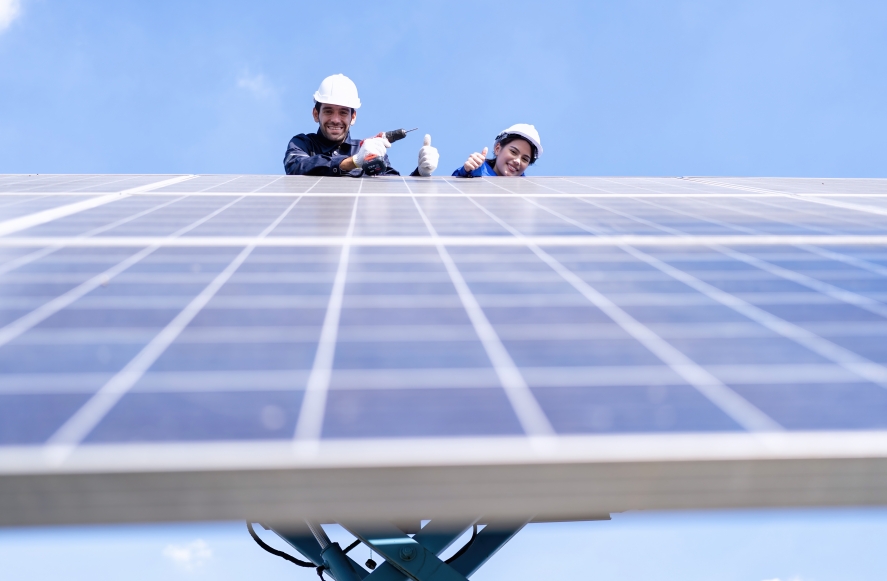|

The recent move by the U.S. government to increase tariffs on imported solar products—especially from China and Southeast Asia—has sparked debate across the global renewable energy sector. While the immediate effects are concentrated in the U.S., these policy shifts may actually benefit the European solar industry in several important ways.
As global supply chains adapt, Europe is uniquely positioned to take advantage of this shift, maintaining competitive pricing, improving supply stability, and strengthening local manufacturing. Here's why the rise in U.S. tariffs might just be good news for European solar buyers and businesses.
How U.S. Tariffs Could Benefit Europe
1. Redirection of Global Supply to Europe
With higher import duties in place, solar manufacturers in Asia may begin diverting more supply to European markets to offset losses in the U.S. This could result in a surplus of available panels in Europe, maintaining or even lowering prices despite global economic pressure.
- More supply = better pricing
As demand in the U.S. is artificially dampened by tariffs, European buyers can gain access to more inventory at globally competitive rates.
2. Europe’s Diversified Supply Chain Holds Strong
Unlike the U.S., Europe doesn’t rely as heavily on a single region for its solar imports. With strong trade relations across Asia, the Middle East, and increasingly Africa, Europe’s solar industry is well-insulated from sudden disruptions caused by single-market policies like U.S. tariffs.
- Import flexibility gives European businesses a major advantage in sourcing both raw materials and finished panels.
3. Boost to European Solar Manufacturers
Higher U.S. tariffs could push global manufacturers to invest more in European partnerships or even establish manufacturing bases in Europe to bypass tariff-related risks entirely. That means more jobs, more innovation, and a stronger domestic solar ecosystem.
Europe’s Growing Solar Manufacturing Capacity
Thanks to EU initiatives like the Green Deal and REPowerEU, Europe is experiencing a solar manufacturing renaissance. Investments in module assembly, cell production, and solar R&D are accelerating:
- The EU has already surpassed 50 GW of annual module production capacity, according to the SolarPower Europe.
- New factories are being built across Germany, Spain, and Eastern Europe to support local demand and reduce dependence on foreign imports.
- Several companies, including Qcells and Enel, are actively expanding European operations to create a fully localized solar supply chain.
As the continent works toward climate neutrality by 2050, local solar production is expected to increase dramatically, giving European buyers more options, stable pricing, and faster project timelines.
Why Now Is the Right Time to Invest in Solar in Europe
Strong Policy Support
The EU and national governments continue to offer generous incentives, tax rebates, and low-interest financing for both residential and commercial solar projects. Even if global module prices rise slightly, available subsidies can more than offset these changes.
Examples include:
- Germany’s KfW program offers subsidized loans for solar.
- France’s Eco-PTZ program provides interest-free loans for energy-efficient home upgrades, including solar systems.
- Italy's Superbonus allows up to 110% tax credit on solar installations (with some limitations and changes in 2025).
Long-Term Energy Independence
Rising electricity prices and grid instability have made energy independence a top priority across Europe. Solar power is a proven way to lock in energy savings for decades, with most systems paying for themselves in just 6–8 years.
With the cost of traditional energy sources fluctuating and geopolitical risks increasing, solar remains the most stable and cost-effective energy investment for homeowners and businesses alike.
Environmental and Economic Returns
By choosing solar, European customers aren’t just reducing their electricity bills—they’re also:
- Supporting local green manufacturing jobs
- Reducing carbon emissions
- Increasing the resilience of Europe’s energy grid
The Bottom Line: U.S. Tariffs, European Advantage
While the U.S. solar market may face challenges due to rising tariffs, Europe’s solar sector is gaining momentum. The redirection of global supply, investment in local production, and robust EU support policies mean solar energy in Europe is more accessible, affordable, and attractive than ever before.
If you’ve been considering switching to solar, now is the perfect time. Take advantage of favorable market conditions, generous incentives, and Europe’s accelerating energy transition.
Contact us today to learn more about solar options for your home or business. Together, we can build a brighter, cleaner energy future.
|


